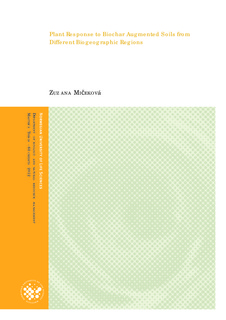Plant Response to Biochar Augmented Soils from Different Biogeographic Regions
Master thesis
Permanent lenke
http://hdl.handle.net/11250/186925Utgivelsesdato
2012-11-14Metadata
Vis full innførselSamlinger
- Master's theses (INA) [593]
Sammendrag
The objective of this study is to use plant phytometers to test whether biochar amendment
increases soil fertility. The phytometric method has the asset of measuring the actual effect of biochar treatment on changes in plant productivity instead of investigating biochar properties and its effect on soil. As plant phytometers were selected two species with contrasting life-histories.
(1) Betula pendula, which is a long-lived and relatively slow-growing perennial specie and (2)
Phacelia tanacetifolia, an annual herbaceous and relatively fast-growing specie. Soil was
collected in fairly homogenous ecosystems from 5 different biogeographic regions (i.e. alpine,
arctic, boreal, mediterranean and temperate). The biochar was prepared mainly from Pinus
sylvestris (90 %), under 450 - 500°C charring temperature.
Plant productivity differed significantly among the soils as expected. The productivity was
highest in the temperate soil and lowest in the boreal soil. However, only the temperate soil
seemed to be highly susceptible to the biochar treatment. Although there were various significant
results of the biochar treatment, there was no clear and consistent difference between the pots
augmented with biochar and the control pots without biochar. Actually, plant productivity
decreased as a result of biochar addition in some cases, which was unexpected. This suggests
that the used biochar may have had a toxic impact on the phytometer plants. The results of this
study show the need for further systematic research and development of a minimum standard characterization criteria of biochar used as a soil amendment.
